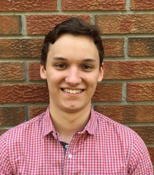Transitioning to 5-axis machining requires both a time and financial investment. But, like all investments, long-term it will pay off. The faster you begin to make the switch, the faster you will start to see the benefits.
The Rise of 5
Cody Deadman | CAMplete Solutions
Manufacturers around the world are doing everything they can to keep up with the rapid advancements in technology, and processes being employed by their competitors. One capability that is becoming increasingly essential to a company’s ability to compete is 5-Axis Machining.
The 5-Axis Machining industry continues to grow yearly, boasting a Compound Annual Growth Rate of almost 7 percent. The promise of shorter production runs and more complex part geometries are bringing the once nerve-racking idea of 5-axis machining, into the mainstream. Although the idea of 5-Axis programming is a scary proposition to many, the notion of a high return on investment is attracting companies of all sizes to plunge into 5-axis technology..
When working with tight tolerances and advanced components, 5 axis mills have become the industry standard; but this was not always the case. 5-axis machines that are today found on shop floors around the world, were once considered to be nothing more than a pipe-dream. When the idea of the 5-Axis mill was first thrown around in the early 50’s, the first machine received a derogatory nickname, often being referred to as “The Opium Mill.”
This nickname is derivative of how advanced the technology was at the time. This is not to say that 5-Axis Machining is still not advanced today. It wasn’t until 2009 that the Bureau of Industry and Security recommended that advanced 5-Axis Technology be removed from the commodity control list. These machines continue to get faster, and more efficient year over year, working at ever increasing levels of precision.
The biggest reason why companies are hesitant to adopt 5-axis technology, and a key force behind the slow acceptance early on, is the complexity of the technology, and therefore the inherent risk that comes with that. When adding additional axes, especially for those without experience, the probability of errors increases greatly over those that come with traditional 3-axis programming. This makes both companies, and their employees, understandably nervous.
Luckily as hardware has advanced, so has the software driving it and the learning resources available to get the most out of 5-axis technology. Companies diving into the 5-axis world are typically forced to either train their current employees or find recent graduates who have been trained on 5-axis machines.
Starting at the educational level, schools around the world have taken notice of 5-axis machinings rise and have incorporated it into their curriculum, ensuring their graduates are ready to enter the workforce with the skills now required to compete.
These students are not just learning the basics of 5-axis machining, they are learning hands-on about the powerful software that is enabling 5-axis machining today. Key industry players like Mastercam and Autodesk have taken note of this and have entered the space, working with students, and integrating directly into school curriculums.
It is important to remember that we learn from our mistakes. 5-axis machining can be daunting, but the mistakes associated with learning don’t have to be. A mistake on a 5-axis machine can be costly, luckily, companies and schools are able to turn to software solutions to protect their expensive machines from errors and collisions.
Simulation software like CAMplete Truepath does not only generate the correct code to be run on the machine, they also verify for any collisions. Simulation shows users how their programs will run in the real world, analyzing exactly how the machine will behave. Users can then identify problem areas and correct them before sending the program to the machine, enabling them to learn from a mistake, before it truly becomes one.
Whether your shop currently runs 5-axis machines, or may in the future, one fact remains true, 5-Axis Machines are here to stay. As companies compete for your business, on both the software and hardware side, 5-axis technology will continue to become more powerful, and easier to use.
Transitioning to 5-axis machining requires both a time and financial investment. But, like all investments, long-term it will pay off. The faster you begin to make the switch, the faster you will start to see the benefits.

About CAMplete
CAMplete Solutions Inc. is a technology driven company with close to 20 years of experience in 5-Axis machining and machine simulation. CAMplete Solutions provides advanced post-processing, verification and optimization software solutions dedicated to 5-Axis and 3-Axis milling machines.
The content & opinions in this article are the author’s and do not necessarily represent the views of ManufacturingTomorrow
Comments (0)
This post does not have any comments. Be the first to leave a comment below.
Featured Product

